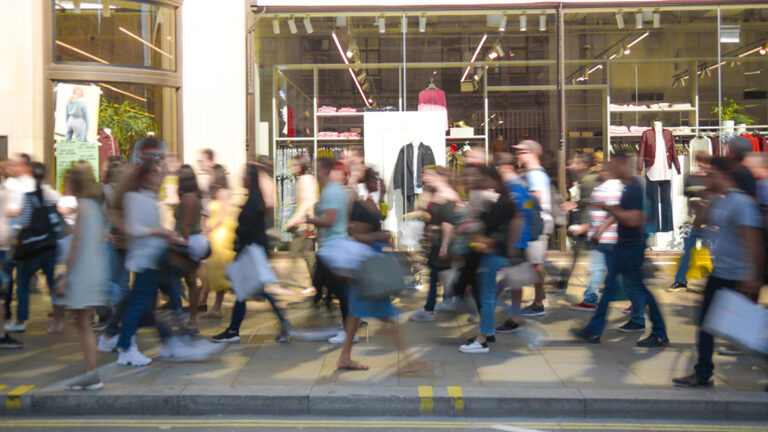February footfall was saved by the school half-term holiday which contributed to an overall rise in footfall of +8.3% from the month before across all UK retail destinations, according to MRI Software data. This was largely driven by high streets witnessing a rise of +11.4% followed by shopping centres (+6.9%) and retail parks (+3.3%). Much of this activity was driven by the third week of the month, which is when half term fell across many regions, delivering a rise in activity of +15.3% in all retail destinations from the week before. This aligns with historical trends for February seeing an overall boost following the post-Christmas slump.
Jenni Matthews, marketing and insights director OnLocation for Footfall Analytics MRI Software, said: “The start of the month was fraught with rail strike and overtime ban disruptions across the UK which, surprisingly, failed to hamper footfall activity and led to footfall rising by +2.9% from the week prior, with high streets playing a leading role in this increase (+4.5%). This rebound is likely to be attributed to a bounce back in activity from the week before when Storm Isha impacted travel across the UK. With widespread action taking place, all regions and town types suffered with declines in footfall at some point during the nine days of strike action.”
MRI found that footfall continued to decline from 2023 levels by -2.2% with much of this driven down by high street activity falling by -3.5% followed by shopping centres (-2.3%).
Said Matthews: “This may well be an indicator of the significant amount of brands, such as John Lewis, Marks & Spencer and Boots, that have streamlined physical store operations over the last 12 months through closures; and for some locations these may act as anchor stores serving a vital role in driving footfall to that location. Retail parks, however, remained resilient with a modest rise of +0.9% which could highlight how they have pivoted their strategies and optimised that tenant mix to cater for the changing needs and wants of their consumers.”
She continued: “Financial pressures are mounting for consumers and this was evident in the final week of February when footfall declined by -8.6% across all retail destinations. Given that this was half term for some regions, we would naturally have anticipated a boost in activity but this may highlight consumers continuing to tighten their purse strings especially with payday not occurring until the end of that week for some.
“As we head into March, retail destinations should approach this with optimism as the second largest trading period falls towards the end of the month; Easter. Falling a week earlier than last year, this shift allows retail destinations to benefit from the holiday build up starting around the third week of the month. Despite consumer confidence falling by 2 points in February (GFK), the outlook for the next 12 months remains strong as consumers continue to spend despite the cost-of-living crisis. The metric which measures people’s personal finance situation for the next 12 months highlighted stability as this had not slipped back and was actually 18 points higher than last February. This suggests that consumers are maintaining control over their finances and budgeting accordingly for the year ahead with relief coming in the form of reduced energy bills and optimism that inflation and interest rates may also be set to fall.”


